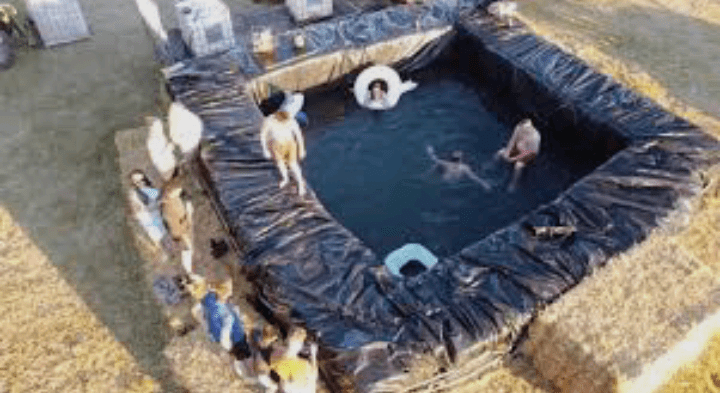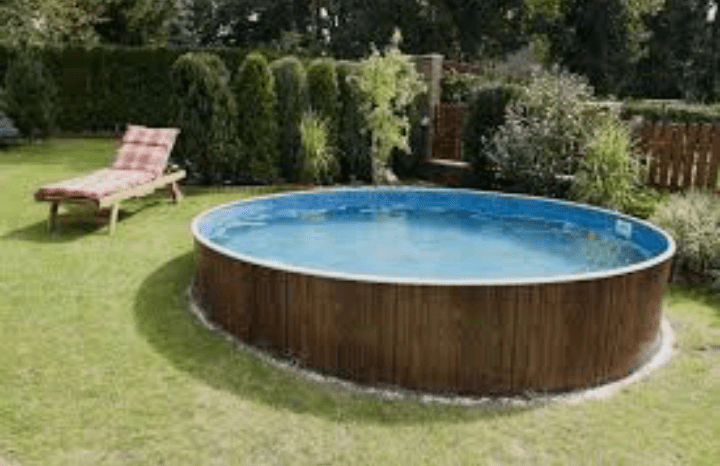Dreaming of sunny days spent by the pool? Look no further – it’s time to turn that dream into reality with a DIY pool project. Imagine the satisfaction of crafting your own aquatic haven, tailored to your preferences and pocketbook.
In the following guide, we’ll take you on a journey from the initial concept to the final splash. No need for a fancy contractor or a bottomless budget – this is a do-it-yourself adventure, and we’re here to make it easy.
Picture this: a warm summer’s day, the sound of water gently splashing, and the laughter of friends and family echoing in your backyard. Whether you’re a seasoned DIY enthusiast or just starting to dip your toes into the world of home projects, building your own pool is a rewarding endeavor that anyone can tackle.
We’ll break down the process into simple, manageable steps, ensuring that every aspect, from planning and excavation to the finishing touches, is within your grasp. Worried about permits and regulations? We’ve got you covered. Curious about the best materials and designs? We’ll guide you through the options.
So, roll up your sleeves, grab your tool belt, and get ready to make a splash – not just into the pool but into a new realm of DIY satisfaction. Let’s dive in and transform your backyard into the go-to spot for relaxation, exercise, and unforgettable memories.
Read also: How to Make a Terrarium
DIY Pool

1: Planning Your DIY Pool
Before you grab a shovel and start digging, careful planning is essential. Begin by defining the purpose of your pool. Are you looking for a place to swim laps, a family-friendly space, or a luxurious retreat? Consider the size, shape, and depth based on your needs and available space.
A. Design Considerations
Start by sketching your ideal pool shape and size. Consider factors such as:
- Available space
- Local regulations
- Accessibility
- Aesthetic preferences
Take inspiration from existing pools but tailor the design to your unique vision.
B. Budgeting
Establish a realistic budget that covers all aspects of the project, including excavation, materials, equipment, and landscaping. Factor in potential unexpected costs to avoid surprises later on.
C. Permits and Regulations
Check with your local municipality to understand the zoning laws and building codes governing pool construction. Obtain the necessary permits before starting any work to avoid legal issues down the road.
2: Excavation and Ground Preparation
With your plans in hand, it’s time to prepare the ground for your DIY pool. This chapter covers the excavation process, ensuring a solid foundation for your pool.
A. Excavation
Whether you choose an in-ground or above-ground pool, excavation is a crucial step. Follow these steps:
- Mark the pool layout using stakes and string.
- Use a backhoe or hire a professional excavation service.
- Remove soil and debris, keeping the excavation area level.
B. Ground Stability
Ensure the ground is stable and free of rocks or roots that could compromise the pool’s structure. Conduct a soil test to identify any potential issues and address them before moving forward.
Read also: How to Refinish Furniture
3: DIY Pool Construction
Now that your site is prepared, it’s time to start building your DIY pool. This chapter covers the construction process, from the pool shell to the plumbing and electrical work.
A. Pool Shell
The pool shell is the structural foundation of your pool. Choose a durable material like concrete, fiberglass, or vinyl, depending on your preferences and budget.
- Concrete: Offers flexibility in design and is highly customizable.
- Fiberglass: Quick to install and requires minimal maintenance.
- Vinyl: Cost-effective and suitable for various shapes and sizes.
Work with professionals to ensure proper installation, and follow manufacturer guidelines for maintenance.
B. Plumbing and Filtration
Efficient plumbing and filtration systems are essential for a clean and well-maintained pool. Plan the plumbing layout, install pipes, and connect them to a high-quality filtration system. Consider adding features like skimmers and drains to improve water circulation.
C. Electrical Wiring
If your pool includes lighting, pumps, or other electrical components, hire a licensed electrician to handle the wiring. Ensure all electrical work complies with safety regulations to prevent accidents.
4: Finishing Touches and Aesthetics
With the structural elements in place, it’s time to focus on the aesthetic aspects of your DIY pool. This chapter covers the finishing touches, landscaping, and creating a visually appealing environment.
A. Pool Decking
Choose a pool decking material that complements your pool design and suits your climate. Options include:
- Concrete: Durable and versatile, with various finish options.
- Wood: Adds a natural and warm aesthetic but requires regular maintenance.
- Pavers: Interlocking pavers provide a customizable and slip-resistant surface.
B. Landscaping
Enhance your pool area with carefully planned landscaping. Consider adding:
- Plants: Choose low-maintenance plants that thrive in your climate.
- Hardscaping: Incorporate features like rocks, stones, or statues.
- Privacy: Install fencing, hedges, or screens for added seclusion.
C. Safety Features
Prioritize safety by installing essential features like:
- Fencing: Secure the pool area with a sturdy and compliant fence.
- Alarms: Install pool alarms to alert you to unexpected movements.
- Covers: Use pool covers to prevent accidents and debris accumulation.
5: Pool Maintenance and Care
Maintaining your DIY pool is crucial for its longevity and your enjoyment. This chapter covers routine maintenance, water chemistry, and troubleshooting common issues.
A. Water Chemistry
Regularly test and balance the pool water to ensure a safe and comfortable swimming environment. Monitor:
- pH levels
- Chlorine levels
- Alkalinity
- Calcium hardness
Use pool testing kits and consult professionals for guidance on adjusting chemical levels.
B. Cleaning
Invest in quality pool cleaning tools, including:
- Skimmers: Remove debris from the water surface.
- Brushes: Scrub the pool walls and floor to prevent algae growth.
- Vacuum: Keep the pool bottom clean by regularly vacuuming debris.
Establish a cleaning routine to prevent the buildup of dirt and algae.
C. Equipment Maintenance
Regularly inspect and maintain pool equipment such as pumps, filters, and heaters. Clean or replace filters as needed, and schedule professional inspections for complex components.
6: Troubleshooting Common Issues
Even with proper maintenance, issues may arise. This chapter addresses common pool problems and provides solutions.
A. Algae Growth
Combat algae by maintaining proper water chemistry, regularly cleaning and brushing the pool, and using algaecides as needed.
B. Leaks
Detect and repair leaks promptly to prevent water loss and potential structural damage. Inspect the pool and its components regularly for signs of leaks.
C. Pump and Filter Issues
If your pump or filter isn’t functioning correctly, check for clogs, leaks, or worn-out parts. Schedule professional maintenance to address more complex problems.
Read also: Operation and Maintenance for Communitor and Grinder
